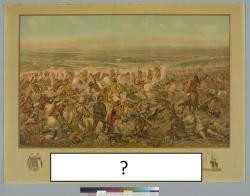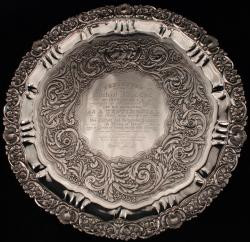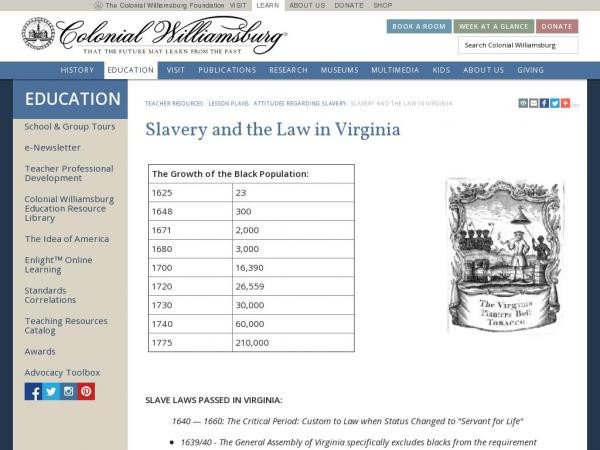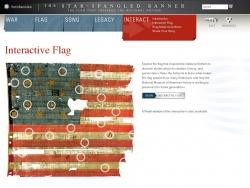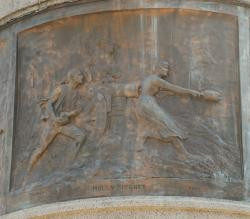Kate Harris
Social Studies teacher
Pittsburgh CAPA
Middle School (13 to 15 years old), High School (16 to 18 years old)
Teacher/Educator
Language Arts And English, Civics, Literature, Cultures, Economics, Social Studies, Geography, Writing, US History, Arts, Other
I'm a history-lover, art fan, and bookworm. I taught high school history (U.S. History and World Religions) for ten years in North Carolina, teach currently in Pittsburgh, PA, and am working to help teachers make the most of this new resource!
Kate Harris's collections
All You Need is Love
<p>The best of love-themed graphic design in the Smithsonian Institution's collections. </p>
 Kate Harris
Kate Harris
12
What's in a name?
<p>This collection is based on a lesson in Bruce Lesh's "Why Won't You Just Tell Us the Answer?" and on a Smithsonian National Museum of American History lesson (both cited fully below). In this lesson, students will evaluate primary source material in order to develop an appropriate name for the site of the 1876 battle at Little Bighorn River. This collection allows students to explore the following questions:</p><ul><li>Why do different interpretations of history develop? How do they change over time?</li><li>When thinking about conflicts in history, whose perspectives are valued and remembered?</li></ul><p>tags: Custer, Sitting Bull, Crazy Horse, Little Big Horn, continuity, change over time, perspective, historiography, point of view, Native American, indigenous, American Indian, Sioux, Greasy Grass</p>
 Kate Harris
Kate Harris
18
How a Bill becomes a Law
<p>How can ideas become legislation? This student activity reviews the process of how a bill becomes a law. Students may choose from two videos to watch, and then can read through the collection and investigate the resources. They may want to take notes on the process. Finally, a sorting activity assesses whether or not students truly understand the process of creating new legislation in the United States.</p>
 Kate Harris
Kate Harris
12
Quilt Quest
<p>Did you know that quilts are also historical artifacts? Use this collection to learn more about how curators investigate quilts to learn about their origins, and then explore a variety of different quilts that tell us important things about the time in which they were made and the crafters who made them. Finally, make your own quilt depicting an important historical moment. </p><p>tags: quilt, craft, activity, review</p>
 Kate Harris
Kate Harris
19
Slavery and Slave Resistance in the Colonies
<p>This collection includes items that will help you understand the conditions that led to the growth of slavery and the ways in which enslaved persons resisted slavery. <br /><br />Guiding Questions:</p>
<ol><li>Why did slavery become increasingly important, especially in the Southern colonies?</li><li>How did "slave laws" support the system of slavery?</li><li>What does it mean to "resist" slavery? </li><li>How did white slave-owners respond to such actions? </li><li>Is maintaining a distinct cultural heritage a form of resistance? Why or why not? </li><li>How do religion, art, and music encourage resistance?</li></ol><p>You will answer your group's assigned question using at least 3 pieces of appropriate evidence from the collection included here. </p>
<p><br /></p>
<p><br /></p>
<p><br /></p>
 Kate Harris
Kate Harris
13
Do our national symbols accurately reflect our nation?
<p>After the War of 1812, a set of new national symbols were revered. These symbols, including the flag and the song that would be come the national anthem, demonstrated a sense of pride in a nation that had now defeated the British twice and would be an experiment in liberty and freedom. Use the items in this collection to learn about the history of these symbols. Do they accurately reflect the ideals of the nation in the early 19th century? Do they accurately reflect the realities of life in the nation at that time?</p>
<p>Lately, the national anthem and athlete protests during the anthem have been the subject of some controversy. What are your personal feelings about the flag and/or anthem? Consider how learning the historical background of the song might impact your opinion on these anthem protests. </p>
 Kate Harris
Kate Harris
11
Women and Gender During the Revolutionary War
<p>The Revolutionary War was an interesting time for women, women served in a lot of conventional ways such as cooks, maids, and nurses; however, women also served in a lot of unconventional ways such as spies and even soldiers. Race was also a factor in when accounting for the roles that women played. The following items are a small symbolic representation of the many various contributions that women made during the Revolutionary War.</p>
<p>Some additional source material:</p>
<p><a href="http://www.history.org/History/teaching/enewsletter/volume7/nov08/women_revarmy.cfm">http://www.history.org/History...</a></p>
<p><a href="http://score.rims.k12.ca.us/score_lessons/women_american_revolution/">http://score.rims.k12.ca.us/sc...</a><br></p>
<p><a href="http://www.historycentral.com/Revolt/Americans/Women.html">http://www.historycentral.com/...</a><br></p>
<p><a href="https://allthingsliberty.com/2013/10/10-amazing-women-revolutionary-war/">https://allthingsliberty.com/2...</a><br></p>
<p><a href="https://www.revolutionary-war.net/revolutionary-war-women.html">https://www.revolutionary-war....</a><br></p>
 Kate Harris
Kate Harris
12

